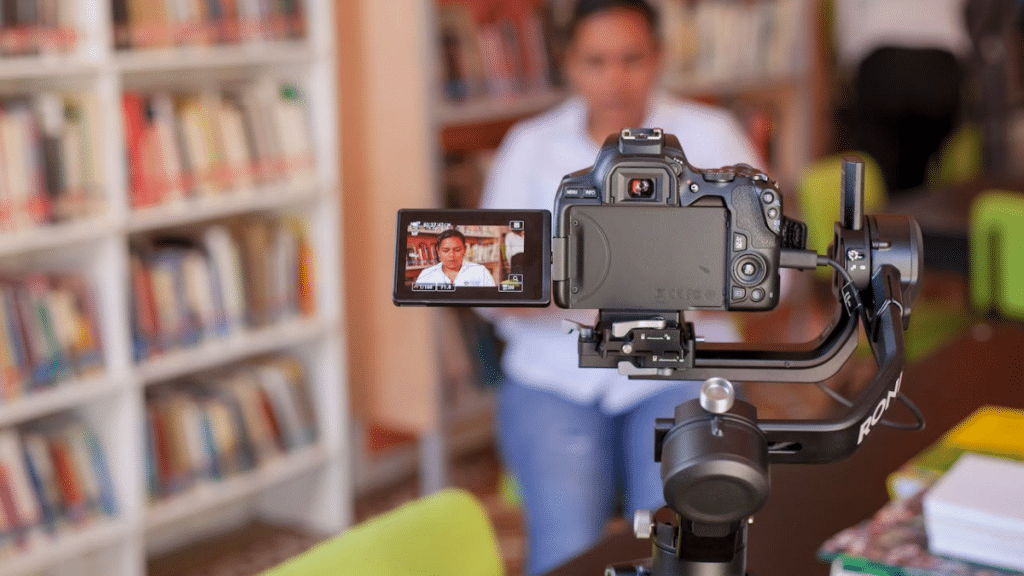Scott Klumb of Boulder, Colorado, is a pioneering filmmaker and has built a reputation for standout documentary storytelling and action sports cinematography. Since founding SMK Media in 2012, he has delivered award-winning work for organizations like ESPN, Tall T Productions, and Level 1 Productions. Beyond traditional production, Klumb champions autism acceptance through acclaimed films such as “Autism: One Man’s Journey” and “Autism Ability,” earning recognition including the Warner Entertainment Best Editor Award. His services span documentary development and production, action-sports cinematography, editing, photography, live streaming, and creative consulting—grounded in proven technical expertise and a track record that resonates with audiences worldwide.
Conducting a documentary interview involves different techniques. A well-done documentary interview helps reveal truth, character, and emotions. Filmmakers can follow various strategies for creating an engaging interview, such as conducting research beforehand.
Research allows documentary makers to learn about their subjects and outline the material they plan to discuss with them. For instance, read previous articles discussing similar topics and watch old documentaries to understand nuances. Entering the interview with knowledge allows interviewers to engage the subject intelligently during the conversation.
Next, ask open-ended questions that invite storytelling. For instance, start questions using broad prompts like “Tell me…” and follow them with more specific questions that engage the subject even deeper. When confirming a fact, avoid questions that only require the subject to answer in the affirmative—group questions into themes like emotional experiences, pivotal moments, and personal background.
In addition, conduct a pre-interview call with the subject. The pre-interview call helps build rapport with the subject and allows interviewers to explain the project to them.
When setting up for a documentary interview, choose a quiet and meaningful location that visually supports the story. Aim for a space that feels natural, like the subject’s home or workspace. Natural light m adds warmth and authenticity. Then, avoid clutter or background distractions that could draw attention away from the subject. Creating a calm and focused setting makes the subject feel at ease and enhances the footage’s overall visual appeal.
To capture quality audio and visuals, use the right equipment and setup. Use lapel or shotgun microphones to record clean sound, and always monitor audio with headphones to catch any issues early. For lighting, avoid harsh overhead lights. Instead, use soft, diffused light sources or natural light paired with reflectors or bounce cards to eliminate shadows. When framing the shot, follow the rule of thirds by positioning the subject slightly off-center and have them look at the interviewer, not the camera. Use one camera for a clean frontal view and add a second camera for cutaways and dynamic over-the-shoulder angles. These choices help create a polished, professional-looking interview.
Begin the interview with simple questions. Ask basic questions like their name and what they do while maintaining eye contact and nodding occasionally to demonstrate active listening. Sometimes, interviewers must abandon their pre-determined questions and ask questions based on the moment.
During the interview, give the subject space to speak; don’t interrupt or talk over them. Let them finish their thoughts fully before responding. Use clear, simple language when asking questions, and if they mention technical terms or obscure references, gently ask them to explain for the audience’s benefit. Encourage them to speak in complete sentences, which will make editing easier. For instance, instead of answering with a simple “Yes,” prompt them to give details. These fuller responses provide better context and can double as effective voice-overs or transitions later in your film.
Finally, after shooting the interview, note that the conversation has ended, but the process will continue. Acknowledge the subject and thank them for sharing their story. Watch the camera footage and look for quotable lines, emotional peaks, and aspects that might need follow-up. Assess if the first try adequately captured the narrative arc or if it will need supplemental material.
